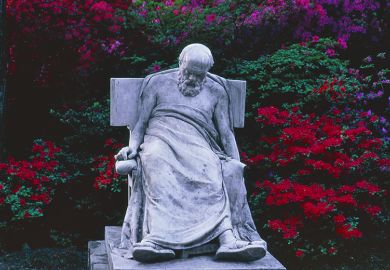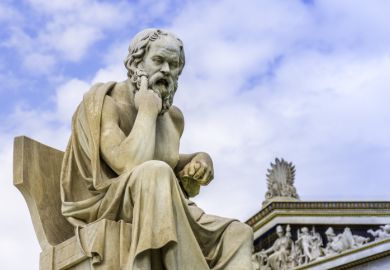Many contemporary philosophers believe that the puzzle of consciousness will yield to a determined scientific onslaught and that the role of philosophy is to serve as midwife to a new science of the mind that is soon to be born. Peter Carruthers's new book is firmly committed to this approach.
The approach assumes that the mind is constructed from wholly physical constituents, and that a broadly functionalist view of its workings is correct. Details remain to be filled in, and one familiar suggestion is to posit a "language of thought". The instructions and data coded in a computer's memory are efficacious in controlling the machine's operations, and carry information about the problems the computer is designed to solve. Similarly, sentences coded in human brains in the language of thought are efficacious in controlling human actions, and carry information that helps us to survive.
Which is the language that is the language of thought? Jerry Fodor's well-known proposal is that there is a universal language of human thought, which he calls mentalese. The babel of natural languages are just so many ways of outwardly manifesting the inner mentalese that constitutes our thoughts. Fodor's view leads to a thesis of the priority of thought over language: public language simply gives expression to pre-existing thoughts. Carruthers takes issue here with Fodor. He thinks that if we take consciousness into account, it would be better to say that thought is a matter of inner speech in the public language.
But what is consciousness? Carruthers endorses a type of approach first introduced by David Armstrong. When I am consciously in pain, I can know by introspection that I am in pain. Conversely, when a state of mine is unconscious, I shall not be able to know by introspection that I am in it. Consciousness and the possibility of introspective knowledge go together in normal human beings, and Armstrong's theory explains this fact by the simple expedient of identifying the two. For example, a first-order state of being in pain will be conscious just if it can be accompanied by the second-order belief that one is in pain. Carruthers adds some refinements to Armstrong's account, and calls the result the "reflexive thought" theory.
According to Carruthers, the objection to Fodor's mentalese is that it does not fit too well with an Armstrong-style account of consciousness. For it seems we have no direct introspective knowledge of any sentences of mentalese that may happen to be written in our brains. If thoughts were sentences of mentalese, we could never introspect them, and so thought could never be conscious. This objection is hardly conclusive, for it can easily be answered in various ways. But Carruthers thinks the price of answering it must be to make the mentalese theory an unduly complicated one.
Carruthers says that a simpler and better theory is at hand. What we can introspect during conscious thought is inner speech - auditory images of spoken sentences of our native tongue. If we take these imaged sentences and not mentalese as the language of thought, then a neatly unified theory emerges of language, thought and consciousness. Moreover, the priority question gets answered now in favour of language: conscious thought presupposes language, since thinking just is inner speech.
Well, maybe. Carruthers's story may appeal to you if you like the language of thought theory, and if you like the theory of consciousness as second-order belief. But neither theory is very new, and both have been subject to damaging criticism in the literature. We do not know how to complete a language of thought theory to ensure that thoughts will have a determinate semantic content. We do not know how to modify a second-order belief theory to take account of the fact that animals are conscious. Animals lack introspective self-knowledge, so Carruthers himself is willing to conclude that they are not conscious. But it will seem to many that we can be more certain that animals are conscious than we can be of any philosophical theory that denies that they are, and that therefore we should not believe Carruthers's theory. We might also have doubts about how much philosophical interest attaches to Carruthers's version of the priority thesis.
This book contains much of interest to anyone seeking a state of the art account of this aspect of the contemporary debate. Carruthers writes competently and knowledgeably about the matters with which he deals. One must admire his professionalism, integrity and thorough knowledge of the literature. It is just a pity that the theory he comes up with is so extremely difficult to believe.
Keith Hossack is lecturer in philosophy, King's College London.
Language, Thought and Consciousness: An Essay in Philosophical Psychology
Author - Peter Carruthers
ISBN - 0 521 48158 9
Publisher - Cambridge University Press
Price - £35.00
Pages - 291
Register to continue
Why register?
- Registration is free and only takes a moment
- Once registered, you can read 3 articles a month
- Sign up for our newsletter
Subscribe
Or subscribe for unlimited access to:
- Unlimited access to news, views, insights & reviews
- Digital editions
- Digital access to THE’s university and college rankings analysis
Already registered or a current subscriber?



